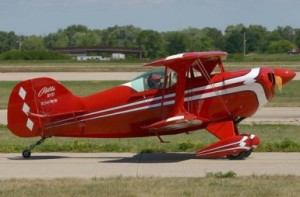 I’ve had good success transitioning to new aircraft in which a familiarization flight is impossible and that has atypical or non-standard instrumentation and controls. My approach to this type of transition is either incredibly odd, terrible overkill, or smart. I’m pretty methodical and not much of a risk-taker so I’m probably way over on the side of caution. My process is as follows:
I’ve had good success transitioning to new aircraft in which a familiarization flight is impossible and that has atypical or non-standard instrumentation and controls. My approach to this type of transition is either incredibly odd, terrible overkill, or smart. I’m pretty methodical and not much of a risk-taker so I’m probably way over on the side of caution. My process is as follows:
Systems
Learn ’em. This starts with the plans. How is the airplane constructed, how are the controls connected, where do the fluid lines run, etc… Hopefully none of this will be needed. BUT! What if a control jams in flight? If you don’t even know how it is connected or where it runs, you have little hope of resolving the situation.
Manuals
I spend lots of time reading whatever manuals and pilot reports exist. In the world of experimental aircraft/homebuilding, a flight manual is pretty rare. However; manuals for all the instrumentation is nearly always available. This isn’t nearly as important when equipped with steam gauges than when the panel is populated with the latest computerized gadgets (EIS, AHRS, etc…). Happily, the Internet has allowed a lot of pilots to easily share their experiences so you can usually find someone’s description of their first flight and/or how their airplane flies. No guarantee that yours will be the same but at least you gain some perspective. Read as many of these as you can find.
Cockpit Time
I spend a couple hours just sitting in the cockpit with the instruments on. I work the controls and scan for information just like when actually flying. The goal is to teach my body and brain where things are and what they feel like without having to look. In my opinion, this is important when on landing/roll-out something happens and you have to go around – finding and setting the elevator trim, flaps, throttle, mixture, watching the airspeed, and keeping the aircraft under control is a very high workload. If you have to look for each of those controls and then look to see where it needs to be set… well… that’s how accidents happen.
Taxi Time
Next I spend time driving the airplane around. Yes, actually driving it – ok, “taxiing.” I want to get used to the rudder pedals and brakes. I want to feel the airplane in a cross-wind while I am at a controllable speed. I want to exercise the skills that I leaned while just sitting in the cockpit. Are my eyes able to instantly find and read the airspeed? Are my hands able to reach for and set the flaps, mixture and throttle? When the answers become yes, I know that I am getting close.
High-Speed Taxi
The next item is a source of much debate among pilots. That is, high-speed “taxis” or runs on the runway. There are certainly situations where they are a bad idea but I prefer to do them. However; I will not do so if me and the airplane are not ready for flight. That means plenty of fuel, no squawks, good weather, I’m fresh and alert, etc… I always start slow – barely more than taxi speed and build that speed 5-10 mph at a time on each successive run until about 10 mph/kts or so short of stall speed. One of the dangers here is that some airplanes become very unstable when the power is reduced and they transition from being pulled forward to ‘coasting.’
Once I’ve done all the above, I am usually feeling pretty good about flying the airplane. First flights always include surprises but with the familiarity that the above provides, I believe you are better prepared to deal with them should they arise.


Leave a Reply